English Grammar made easy

This is an easy-to-understand list that I have compiled of Nouns, Pronouns, Adjectives and Verbs which can be used by English teachers or students of English.

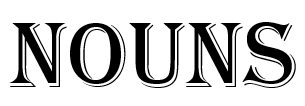
identify objects or people and can be classified as:
-Proper Nouns:
These start with a capital letter such as names of places Dubai, Thursday and people e.g. Susan Smith, etc.
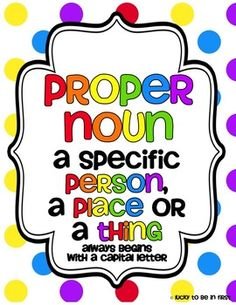
-Common Nouns:
Names of objects such as table, chair; bus etc.
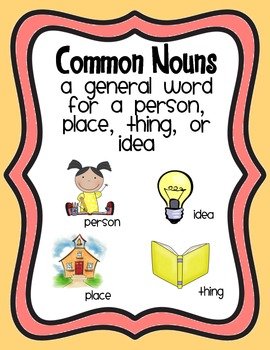
-Collective Nouns:
These refer to groups of objects or people such as the army, the press, the police, etc.
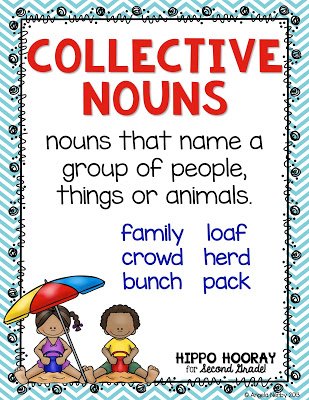
-Countable Nouns:
These are things that can be counted singularly such as dog, cat, apple, telephone, etc. The plural is usually made by adding ‘-s’.

-Uncountable Nouns:
These are also called mass nouns and identify such things as money, hair, etc.
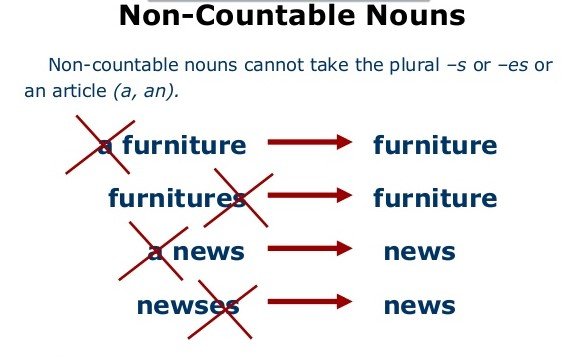
-Compound Nouns:
These are two nouns combined to identify one object such as address book, living room, etc.
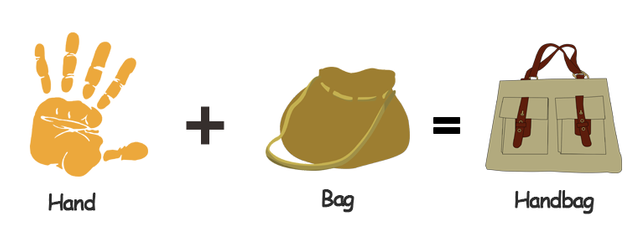

are used to refer to nouns without repeating things already spoken about. There are several different kinds of pronouns.
.jpg)
-Personal Pronouns:
Consist of words to refer to oneself, other people or things that you are talking, like I, we, you, he, she, it, and they - when used to refer to the subject of a sentence, and me, us, you, him, he, it and them - when referring to the object of a sentence.
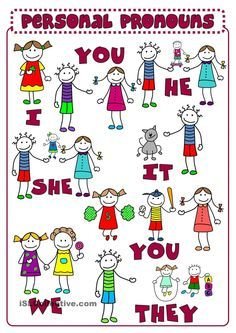
-Possessive Pronouns:
These identify objects or people that ‘belong’ to someone such as mine, ours, yours, his, hers and theirs.
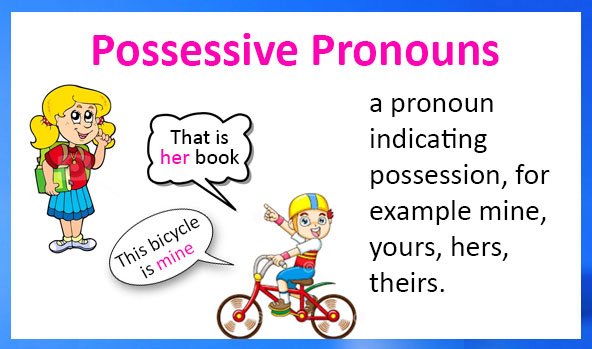
-Reflexive Pronouns:
These are used to refer back to the subject of an action such as myself, yourself, himself, herself, ourselves, yourselves and themselves.


describes people or things and give more information about such things as the qualities of an object, thing or person.
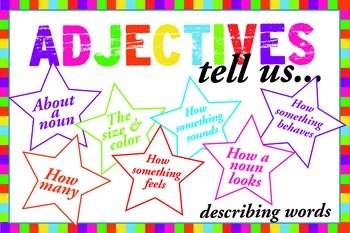
-Colour Adjectives:
These state the colour of something e.g. blue, green, grey, etc.

-Classifying Adjectives:
These describe which class a person or thing belongs to e.g. industrial, official, historical, etc.
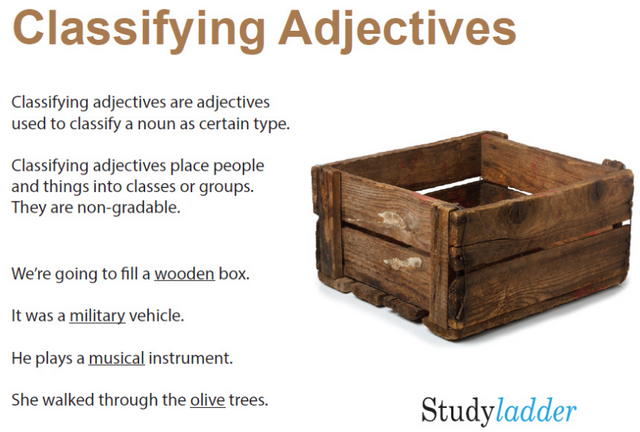
-Qualitative Adjectives:
These are words such as big, happy, strong, etc., and can be graded to demonstrate variable levels of the quality described. An example of an adjective being modified is the use of the word very in this sentence: ‘John was very surprised when he opened the door’. Other words (called modifiers) can be used to increase or lessen the meaning of adjectives such as rather, quite, extremely, etc.
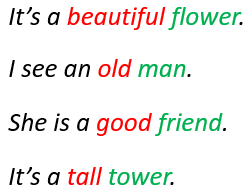
-Comparative Adjectives:
These, as the name suggests, compare qualities. Examples are words such as smaller, prettier, etc. When a word has one syllable, the letter ‘-er’ is put at the end of the adjective. ‘-er’ is also placed at the end if it is a two-syllable adjective which ends in ‘y’. Other two and three syllable adjectives use the word ‘more’ in front of them to form a comparative, or more, the word more is placed in front of it e.g., dark - darker, busy – busier, beautiful – more beautiful.
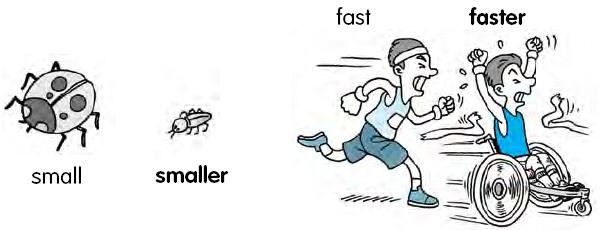
-Superlative Adjectives:
These are words that are used to express the limit described by an adjective. Words such as cleanest, saddest, etc. Words of three syllables or more have the word “most” placed in front of them e.g. ‘It was the most exciting game in the world.’
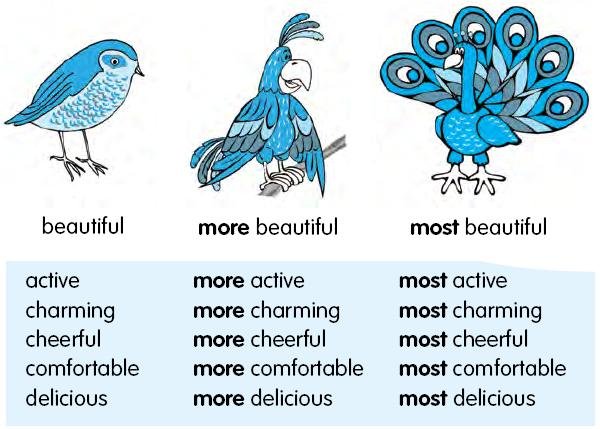

express action, process or state about the noun which you are talking about.
-Regular Verbs:
These have the same ending in common (-ed), such as the verbs:
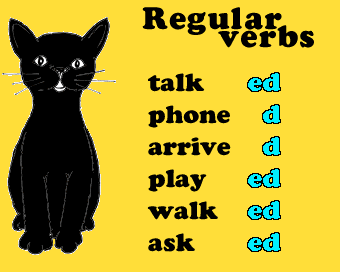
-Irregular Verbs:
These verbs have irregular endings, such as the verbs:

-Auxiliary verbs:
These are the verbs which ‘help’ the main verbs and are the verbs: be, do and have.

Auxiliary Modal Verbs:
These are verbs which also help the main verb but they also express the mood of the sentence.
The modal verbs in English are:
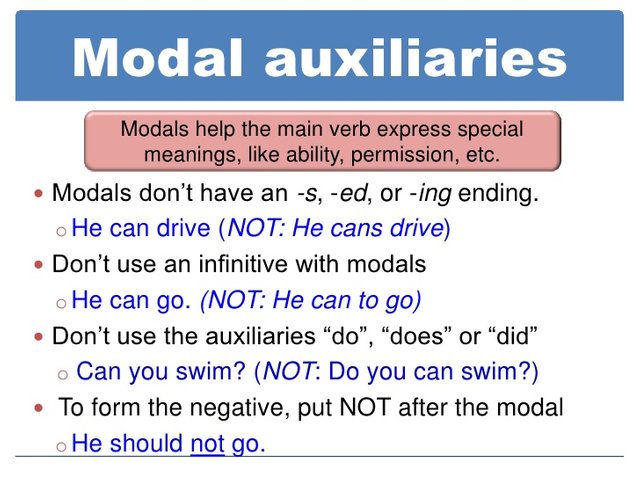
An example of how modal verbs change the mood or feeling of a sentence can be seen if the following sentences are compared:
'I can sing'
'I could sing'
'I may swim'
'I have to swim'
'I will swim'
'I should swim'

References:
https://en.wikisource.org/wiki/The_Grammar_of_English_Grammars/Part_II
http://english-zone.com/spelling/comparerules.html

What a beautiful worksheet - the little ones will love it (and I can think of a few of my big kids that will also benefit from this?
Thanks @anneke. If it can be used, then I'm glad ;)
nice post, thanks for sharing @bdmomuae
You really broke everything down well! I ain't ever seen a list like this!
Congratulations! This post has been upvoted from the communal account, @minnowsupport, by Belinda from the Minnow Support Project. It's a witness project run by aggroed, ausbitbank, teamsteem, theprophet0, and someguy123. The goal is to help Steemit grow by supporting Minnows and creating a social network. Please find us in the Peace, Abundance, and Liberty Network (PALnet) Discord Channel. It's a completely public and open space to all members of the Steemit community who voluntarily choose to be there.
If you like what we're doing please upvote this comment so we can continue to build the community account that's supporting all members.
Oh! This is so beautiful and coulorful :)))
Nice post. Thanks.
Nice
I will never understand why "furniture" word looks like that... What is a chair? Piece of furniture... Crazy. English is crazy language without good rules.
Furniture is just to simplify a collection. Take the sentence for example: I bought a chair, a dinner table, a coffee table, a desk, a sofa, a study table, a bed, a cupboard and a closet for my new house. But instead of going into that much detail, you will only need to say: I bought new furniture for my new house.
Yep. I know but example in polish:
Furniture - meble (plural form)
Piece of furniture - mebel (singular form)
It would by easier to said "new furnitures" when you want to said about collection.
I like your post. Thank you.
Thank you :)